German
Reissiger & Sedlatzek - La Pasta - Fl & Pf
 La Pasta! Op.36, by Reissiger & Sedlatzek
La Pasta! Op.36, by Reissiger & SedlatzekConcertantes Variations sur la Cavatina de Rossini, No.3
Gassett Collection - Facsimile Edition by C.A.Vater/Noteworthy Sheet Music, with a Foreword by Peter H. Bloom
Flute and Piano Parts, PDF $13.50
Reissiger and Sedlatzek's work La Pasta is a particularly effective concert piece with which the accomplished flutist can enthrall a diverse audience by evoking the dramatic majesty of grand opera while applying the scintillating techniques of the 19th century virtuoso. La Pasta is flutist Johann Sedlatzek's homage, celebration, and souvenir of the redoubtable mezzo-soprano Giuditta Pasta (1798± - 1866±), arranged by the superb composer/conductor Carl Gottlieb Reissiger. Pasta (nee Negri) was a cynosure of Italian opera who created brilliant dramatic roles for Bellini, Donizetti, and Rossini. Legendary Maria Callas (1923-77) is often compared to Pasta by opera aficionados, but few are likely to have heard both in their prime. — P. H. Bloom, 5/23/2011
For additional information about the Gassett Collection, please see see our article An Introduction to the Gassett Collection.
Piano part, 13 pages; Flute part, 5 pages; Total, 24 pages
Preview
Brahms ― Sonata, Op.120 No.2 ― Alto Flute
 Sonata, Op.120 No.2, by Johannes Brahms
Sonata, Op.120 No.2, by Johannes BrahmsTranscribed for Alto Flute by J.W.Pratt
Alto Flute Part, PDF $8.99
This is the second of Brahms' two clarinet sonatas, transcribed for alto flute by John Pratt. Although written originally for clarinet, Brahms himself created two more versions of his Op.120 sonatas, for violin and viola. Mr. Pratt, who transcribed these works for alto flute so expertly, writes in his foreword: "If Brahms was happy with versions for clarinet, viola, and violin, surely he would have welcomed arrangements for alto flute, especially since it is the mellow rather than the clarion aspect of the clarinet that he called on. In making our arrangements for alto flute, the violin versions have been particularly helpful, since the violin has the same lower range as the alto flute, but they required modification for several reasons. One, of course, is that the alto flute cannot play as loudly at the bottom of its range as the violin can. Another is that Brahms gave the violin double stops even though the clarinet is limited to a single voice." Our editions of the two Op.120 sonatas include only the alto flute parts, as Brahms' piano scores are freely available in the public domain. Here is a link to the listing of Op.120 No.2 on IMSLP.org, where the clarinet, viola, and violin versions with piano scores may be found. Our alto flute arrangements are based on the usual piano parts that accompany the clarinet as the solo instrument.
Alto Flute part, 8 pages; Total, 12 pages.
PreviewBach - Prelude and Fugue, BWV 532 - arr. Woodwind Quartet
 Prelude and Fugue, BWV 532, by J. S. Bach
Prelude and Fugue, BWV 532, by J. S. BachArranged for Woodwind Quartet by John W. Pratt
Score and Parts, PDF $15.97
“Among the big Bach organ fugues, BWV 532 is unusually well suited to woodwind quartet. Written during Bach's early, carefree Weimar period (only four children to support), it is high-spirited and can even be read as witty. It benefits from having a separate sonority for each voice, especially when the countersubject interjects a perky comment in the subject's empty space. It has rapid passage work throughout, almost suggesting Mendelssohn—but his chamber music, not his organ music! It makes almost no significant use of the sheer power of the mighty “king of instruments”; the way the voices are brought in and deployed in itself provides the excitement and variations in volume. Woodwinds have ample piano and forte capabilities for the purpose. The Prelude is also readily adapted to woodwind quartet, consisting mainly of a straightforward four-part Alla breve.The Prelude’s brief introductory and concluding material includes pedal scales and other flourishes that are no less effective for being easy to play on winds. // The arrangement here preserves Bach's four voices almost exactly.” — from J. W. Pratt’s foreword to the edition
Click to listen to computer-generated audio samples from the score; audio clips from the Prelude (m4-22) and the Fugue (m14-27), are separated by a brief pause.Score, 16 pages; Flute part, 5 pages; Oboe part, 6 pages; Bb Clarinet part, 6 pages; Bassoon part, 5 pages;Total, 46 pages.
PreviewHoffmeister - Sonata in D minor - Flute and Clarinet
 Sonata in D minor, Op.50, Duo 3, by Franz Anton Hoffmeister
Sonata in D minor, Op.50, Duo 3, by Franz Anton Hoffmeister
Duet transcribed for Flute and Bb Clarinet
Score and Parts, PDF $11.25
Noteworthy Sheet Music published an edition of the Sonata in D minor, Duo 3 from Hoffmeister's Trois Duos pour Deux Flûtes, Op.50, after being contacted by flutist Richard A. Evans. Years ago, Mr. Evans had located several editions of 18th and 19th century flute duets, long since out of print, at the Library of Congress. Finding them quite enjoyable to play, and believing them undeserving of their current obscurity, he and his music colleague Bronnie Stroud took the initiative of re-typesetting and editing the pieces using a modern music notation software program. Aware of the paucity of repertoire available for flute and clarinet duo, and realizing these pieces would work nicely for that instrument pair as well, he also transcribed the second flute parts for Bb clarinet. We at NSM agreed that these works should be made more readily available to present-day musicians and audiences, and we published them after making only minor stylistic and formatting revisions to Mr. Evans' scores and parts; the articulation and dynamic markings are those suggested by Mr. Evans.
Preview
Score, 15 pages; Flute part, 8 pages; Bb Clarinet part 8 pages; Total, 34 pages.
Gabrielsky - Adagio et Variations - Fl & Pf
 Adagio et Variations pour la Flûte sur un Thême de Caraffa, Op. 71, by W. Gabrielsky
Adagio et Variations pour la Flûte sur un Thême de Caraffa, Op. 71, by W. GabrielskyGassett Collection - New Edition by Noteworthy Sheet Music
Flute Part and Piano Score, PDF $18.75
Johann Wilhelm Gabrielski (or Gabrielsky), 1795-1846, was an acclaimed German flutist and composer from Berlin. In 1814 Gabrielski secured a position as flutist at the theatre in Stettin and within two years was appointed to the Royal Court. Gabrielski's compositions, of which there are more than 100, were highly esteemed and popular in his day. Although these works have much to offer modern day flutists as well, Gabrielski's music is neither widely known nor readily available today. The Adagio et Variations pour la Flûte, Op. 71, exploits melodic material by Michele Enrico Carafa (Caraffa) di Colobrano (1787-1872), a Naples born musician who had a remarkably successful career in Paris as a composer for the Opéra-Comique and as a professor of composition and counterpoint at The Conservatoire. The work showcases the flutist's virtuosity, atop a relatively uncomplicated piano accompaniment.
For additional information about the Gassett Collection, please see see our article An Introduction to the Gassett Collection.
Flute part, 11 pages; Piano Score, 16 pages; Total, 31 pages.
PreviewSchumann - Sonata in A minor - Alto Flute
 Sonata in A minor, Op.105, by Robert Schumann
Sonata in A minor, Op.105, by Robert SchumannTranscribed for Alto Flute (and Piano) by John W. Pratt
Alto Flute Part, PDF $8.99
Sonata in A Minor, Opus 105, was the first of two violin sonatas composed by Robert Schumann in 1851. The first movement has a gentle melody very well suited to the alto flute and the kind of flowing piano accompaniment and overlapping harmonies one finds in much of Schumann's chamber music. The Allegretto, with its hesitations and shifting moods and motifs, is also well suited to the alto flute. The restless final movement is exciting and effective (and a workout for both players) whatever solo instrument is used. The range and dynamics of Schumann's violin part, as well as its character, fit the alto flute's nature and capabilities beautifully. We provide our alto flute transcription of the violin part; the piano score and original violin part are available elsewhere in the public domain as free pdf downloads (click on the link).
Alto Flute part, 9 pages of music; Total, 12 pages.
PreviewReger - Albumblatt - Alto Flute & Piano
 Albumblatt, by Max Reger
Albumblatt, by Max RegerTranscribed for Alto Flute and Piano by Carol A. Vater
Piano Score and Alto Flute Part, PDF $3.97
This gorgeous and surprisingly complex Albumblatt in E-flat major was written by Max Reger in ~1902 and originally scored for clarinet and piano. The piece is beautifully-suited to the range and sonority of the alto flute, and we provide here both our alto flute transcription of the clarinet part and a re-notated edition of the piano score.
Piano score, 2 pages; Alto Flute part, 1 page; Total, 5 pages.
Hauptmann - Lieder - Voice, Violin/Flute, Piano
 Meerfahrt, Nachtgesang, and Der Fischer, Op.31, by M. Hauptmann
Meerfahrt, Nachtgesang, and Der Fischer, Op.31, by M. HauptmannFacsimile Edition plus a Transcription of the violin part for Flute by C.A.Vater
Score for Violin, Voice, & Piano, Violin Part, and Flute Part, PDF $18.75
Moritz Hauptmann (1792-1868) was a renowned music theorist, pedagogue, violinist, and composer. In 1842, at Mendelssohn's recommendation, he was appointed cantor at the Thomasschule and professor of composition at the newly founded Leipzig Conservatory. Hauptmann published a major scholarly work on music theory in 1853, "Die Natur der Harmonik und Metrik" (The Nature of Harmony and Meter), as well as some 60 compositions.
Hauptmann's Op.31 comprises three lovely songs scored for voice with accompaniment of violin and piano: No.1, Meerfahrt (Sea Voyage); No.2, Nachtgesang (Night Song); and No.3, Der Fischer (The Fisherman). The vocal range extends from B3 to G5, and thus is well-suited for mezzo-soprano. These pieces were published by C. F. Peters as part of a larger volume, now in the public domain, entitled "Lieder-Album für eine Singstimme mit Pianoforte und Violin Begleitung". Our edition contains an "enhanced" facsimile of the original, plus a new transcription of the violin part for flute created using a modern music notation program. The three songs may be performed with comparable gratification utilizing the accompaniment of either violin or flute, along with the voice and piano.
Score, 15 pages; Violin part, 5 pages; Flute part, 5 pages; Total, 29 pages.
PreviewReinecke - Lieder - Voice, Violin (Fl/Afl), Piano
 Waldesgruss and Frühlingsblumen, Op.26, by C. Reinecke
Waldesgruss and Frühlingsblumen, Op.26, by C. ReineckeFacsimile Edition plus Transcriptions for Flute & Alto Flute by C.A.Vater
Score for Violin, Voice, & Piano, Violin Part, Flute & Alto Flute Parts, PDF $9.98
Carl Reinecke (1824-1910) was a renowned German pianist, composer, conductor, and teacher of composition. He composed numerous works, and for over 35 years was a leader of the music scene in Leipzig. Reinecke's Op.26 includes two songs for voice with accompaniment of violin and piano: No.1, Waldesgruss (The Forest's Greeting); and No.2, Frühlingsblumen (Spring Flowers). The vocal range of Reinecke's Op.26 lieder extends from C4 to A5, and thus is well-suited for either soprano or mezzo-soprano.
Our edition contains an "enhanced" facsimile of the original score and violin part, plus new transcriptions of the violin part for either alto flute or flute. Thus, the two songs may be performed utilizing the accompaniment of violin, alto flute, or flute, along with the voice and piano. Alternatively, these pieces work very well as an instrumental arrangement with the voice part played on flute, accompanied by alto flute and piano.
Score, 6 pages; Violin, Alto Flute, and Flute parts, 2 pages each; Total, 18 pages.
PreviewSchubert - Der Hirt auf dem Felsen - Alto Flute (clarinet trans.)
 Der Hirt auf dem Felsen, Op.129, by F. Schubert
Der Hirt auf dem Felsen, Op.129, by F. Schubert Obbligato Transcribed for Alto Flute in G by Peter H. Bloom
Alto Flute Part, PDF $5.99
In the preface to his transcription, Mr. Bloom writes: "In terms of color, nuance, expression, dynamics, and tessitura the obbligato works exquisitely on the alto flute. Theobald Boehm (1794-1881) designed our first modern alto flute in 1847. Had Schubert (born in 1797) survived to hear it, I have no doubt that he would have made the alto flute an essential part of his armory of orchestration..... Der Hirt auf dem Felsen is very effective, also, in a purely instrumental arrangement for flute (taking the vocal line) and alto flute obbligato. It's an ideal didactical vehicle for coaching the developing flutist in the art of rhetorical performance as well as a splendid concert/recital piece."

The premiere of Schubert's The Shepherd on the Rock, with obbligato transcribed for alto flute, was performed by D'Anna Fortunato (Mezzo-Soprano), Peter H. Bloom (Alto Flute), and Mary Jane Rupert (Piano) during a concert at the Gibson Theatre in Elmira, NY, on November 3, 2009, as part of the Elmira College Encore Series.
"Flutist Peter Bloom has done an invaluable service to Schubert and to concert singers by providing this charming arrangement, for alto flute, of the original clarinet obbligato to Der Hirt auf dem Felsen. I've performed it in this version on several occasions and find that the flute timbre is alluring. It's so easy to blend with and respond to the alto flute! I believe that, had it been possible, the composer, himself, would have truly enjoyed this arrangement at a Schubertiade performance of his own." - D'Anna Fortunato
We provide our alto flute transcription of the obbligato part, originally for clarinet. The voice and piano parts are readily available as a free pdf download of the score, from sources such as imslp.org/.
Alto Flute part, 4 pages of music; Total, 8 pages.
PreviewWeber - Polacca Brillante, Op.72 - Two Flutes
 Polacca Brillante, Op.72, by Carl Maria von Weber
Polacca Brillante, Op.72, by Carl Maria von WeberAnonymous Arrangement for Two Flutes
Gassett Collection - New Edition by C.A.Vater/Noteworthy Sheet Music
Flute 1 Part, Flute 2 Part, and Score, PDF $7.99
Carl Maria von Weber (1786-1826) was a German piano virtuoso and prolific composer who made major, influential contributions to many kinds of music and is widely credited with being a founder of the Romantic school. Weber's rousing Polacca Brillante in E major, Op.72 (alternatively known as L'Hilarité or Grande Polonaise brillante) was written originally for piano solo. It was composed and first published in 1819, and was later transcribed by Liszt for piano and orchestra.
We came across an anonymous arrangement of this piece, a duet for two flutes, among the print copies included in the Gassett Collection. The duet is great fun for flutists, so we created a renotated edition of the arrangement, with the goal of modernizing the format and correcting some likely inaccuracies. Our new edition includes a score at no extra charge as well as the two flute parts.
For additional information about the Gassett Collection, please see see our article An Introduction to the Gassett Collection.
Fl1/Fl2 Score, 8 pages; Flute 1 part, 4 pages; Flute 2 part, 4 pages; Total, 22 pages.
PreviewMendelssohn - Concert Piece No.2 - Two Winds (and Piano)
 Concert Piece No.2, Op.114, by Felix Mendelssohn
Concert Piece No.2, Op.114, by Felix MendelssohnTranscribed for Various Wind Instruments (and piano) by John W. Pratt
(originally for Clarinet, Basset Horn, and Piano)
Primo parts for Clarinet, Flute, or Oboe, PDFs $5.99 each
Secondo parts for Bassoon, Clarinet, or English Horn, PDFs $5.99 each
The following is excerpted from John Pratt's © foreword:
In 1833, Felix Mendelssohn (1809-1847) wrote two Concert Pieces for Clarinet, Basset Horn, and Piano, op. 113 and op. 114, as show-pieces for the famous clarinetist Heinrich Bärmann (1784-1847) to play with his up-and-coming son Karl (1811-1885) on the basset horn. // These works are very suitable for transcription, even aside from the rarity of the basset horn today. We provide, as well as the original clarinet part, transcriptions of it for flute and oboe. Transcriptions of the basset horn part are provided for bassoon, clarinet, and English horn. These primo and secondo parts can be mixed and matched at will. // Since a good quality PDF of the original piano score with excellent page turns is freely available in the public domain (see IMSLP.org), we have not provided a score here; our transcribed primo and secondo wind parts can readily be used with the original score.
Each wind part is 4 pages of music; 6 pages total.
Primo parts for Flute, Clarinet in B-flat (note that the original primo clarinet part is freely available on IMSLP.org), or Oboe.
Secondo parts for Clarinet in B-flat, Bassoon, or English Horn. Preview Bassoon II part
Mendelssohn - Concert Piece No.1 - Two Winds and Piano
 Concert Piece No.1, Op.113, by Felix Mendelssohn
Concert Piece No.1, Op.113, by Felix MendelssohnTranscribed for Various Wind Instruments and Piano by John W. Pratt
(originally for Clarinet, Basset Horn, and Piano)
Individual Primo parts for Clarinet, Flute, or Oboe, PDFs $6.99 each
Individual Secondo parts for Bassoon, Clarinet, or English Horn, PDFs $6.99 each
Piano Score, with original Clarinet and Basset Horn lines in concert pitch, PDF $6.99
The following is excerpted from John Pratt's © foreword:
"In 1833, Felix Mendelssohn (1809-1847) wrote two Concert Pieces for Clarinet, Basset Horn, and Piano, op. 113 and op. 114, as show-pieces for the famous clarinetist Heinrich Bärmann (1784-1847) to play with his up-and-coming son Karl (1811-1885) on the basset horn. // Mendelssohn's two Concert Pieces are very suitable for transcription, even aside from the rarity of the basset horn today. We provide, as well as the original clarinet part, transcriptions of it for flute and oboe. Transcriptions of the basset horn part are provided for bassoon, clarinet, and English horn. These primo and secondo parts can be mixed and matched at will. For the score, we use Mendelssohn's instruments rather than some other arbitrary pair. This enables anyone interested to check any transcribed part against the original. The score gives the parts in concert pitch, because a transposition would apply to only one of the possible winds, and because the pianist can then easily play any part at original pitch."Please note that PDFs of the original score and clarinet-primo part are available free of charge in the public domain (see the listing of this work on IMSLP.org), and our transcribed primo and secondo wind parts can readily be used with the original score. Therefore, you should purchase our original instrument Score or Clarinet-primo part only if you would like measure numbers or Mr. Pratt's score (for piano with clarinet and basset horn) in concert pitch.
- Piano Score with Clarinet and Basset Horn lines in concert pitch, 8 pages; Total, 10 pages (note that the original score is freely available on IMSLP.org)
- Clarinet in B-flat, primo part, 4 pages; Total, 6 pages (note that the original clarinet part is freely available on IMSLP.org)
- Flute, transcribed primo part, 4 pages; Total, 6 pages
- Oboe, transcribed primo part, 4 pages; Total, 6 pages
- Bassoon, transcribed secondo part, 4 pages; Total, 6 pages
- Clarinet in B-flat, transcribed secondo part, 4 pages; Total, 6 pages
- English Horn, transcribed secondo part, 4 pages; Total, 6 pages
Bach - Toccata, Adagio, and Fugue - Wind Quartet
 Toccata, Adagio, and Fugue in C major, BWV 564, by J. S. Bach
Toccata, Adagio, and Fugue in C major, BWV 564, by J. S. BachArranged for Woodwind Quartet by John W. Pratt
Score and Parts for Flute, Oboe, Clarinet, & Bassoon, PDF $21.25excerpted from JWP’s © foreword to the edition:
Among J. S. Bach's big organ works, the Toccata, Adagio, and Fugue, BWV 564 is atypical in ways that make it unusually well suited to transcription for woodwind quartet. Unlike most, it has a middle movement, an Adagio with an elaborate and gorgeous melody which lies comfortably for flute and can benefit greatly from the shaded, nuanced dynamics and articulations that a solo flutist can provide. The other winds bring out Bach's beautiful voice-leading in the Adagio's two inner parts and its marching but not martial bass. The four-part Fugue is unusual, too—light and lighthearted, happily adaptable to woodwinds, with no call for great power and, rather than a climactic ending, a fading coda that defies convincing treatment on the organ. The exuberant Toccata starts with an extended manual solo passage... mostly in 32nd notes, which... I felt it would be more effective as a game of frequent handoffs between instruments than as a series of longer individual études. The pedal solo, mostly 16ths, calls for the extra weight of doubling.Click to listen to a computer-generated audio sample from the end of the Toccata into the beginning of the Adagio.
Score, 17 pages; Flute part, 6 pages; Oboe part, 5 pages; Bb Clarinet part, 5 pages; Bassoon part, 4 pages; Total, 46 pages.
Preview
Bach - Prelude & Fugue - Wind Quintet
 Prelude and Fugue, WTC Book I, No.22, by J.S.Bach
Prelude and Fugue, WTC Book I, No.22, by J.S.BachTranscribed for Woodwind Quintet by John W. Pratt, PDF $16.00
Though written for keyboard, this Prelude and Fugue from Book I of Bach's Well-Tempered Clavier is wonderfully adaptable to an instrumental quintet. The Prelude, with its serene harmonic pacing, reveals an almost Schubertian sublime beauty, and the magical counterpoint of the five-part fugue emerges crystal-clear. The challenge for the players, as well as the pleasure, lies in ensemble achievements, not technical difficulties in individual parts. Scored for Flute, Oboe, B-flat Clarinet, Horn, and Bassoon, with an alternate part for Alto Flute in place of Oboe.
Score, 6 pages; Parts, 2 pages each for Flute, Oboe (plus alternate Alto Flute), Clarinet, Horn, and Bassoon; Total, 20 pages.
PreviewSchubert - Sonatas, Op.137 - Alto Flute
 Sonatas, Op.137, by F. Schubert
Sonatas, Op.137, by F. SchubertTranscribed for Alto Flute and Piano by C. A. Vater & J. W. Pratt
No.1, Sonata in D major, D.384, Alto Flute Part, PDF $5.99
No.2, Sonata in A minor, D.385, Alto Flute Part, PDF $7.99
No.3, Sonata in G minor, D.408, Alto Flute Part, PDF $5.99
Franz Schubert (1797-1828) wrote his three violin sonatas Opus 137 when he was barely 19. They were published posthumously as 'Sonatinas', perhaps for marketing reasons, but they are full-scale sonatas in traditional classical style and format, the first having three movements and the others four. These plus the violin sonata in A of the next year constitute fully half of Schubert's known works for piano and solo instrument.
Schubert's Op.137 sonatas are truly delightful, and we have adapted the violin parts for alto flute. Where appropriate, changes have been introduced to better accommodate the range, sonority, and general characteristics of the alto flute. Such modifications include occasional octave adjustments, dynamic changes, and suitable flute-friendly alternatives to the violin's doublestops. We provide our transcribed alto flute parts; the piano scores are readily available in the public domain as free pdf downloads from imslp.org/.
No.1, Sonata in D major: Alto Flute part, 6 pages; Total, 8 pages. PDF $5.99
Preview
No.2, Sonata in A minor: Alto Flute part, 8 pages; Total, 10 pages. PDF $7.99
Preview
No.3, Sonata in G minor: Alto Flute part, 6 pages; Total, 8 pages. PDF $5.99
PreviewWeber - Grande Polonaise, Op.21 - Two Flutes
 Grande Polonaise, Op.21, by Carl Maria von Weber
Grande Polonaise, Op.21, by Carl Maria von WeberAnonymous Arrangement for Two Flutes
Gassett Collection - New Edition by C.A.Vater/Noteworthy Sheet Music
Flute 1 Part, Flute 2 Part, and Score, PDF $7.99
Carl Maria von Weber's Grande Polonaise, Op.21 was written originally for piano solo. The piece was composed in 1808 and first published in 1815. The Gassett Collection of 19th century flute music contains an edition of this piece arranged anonymously as a duet for two flutes, along with a flute duet version of Weber's Polacca Brillante in E major, Op.72, which we also offer. We re-notated the flute arrangement of the Grande Polonaise and offer this new edition, which includes a score at no extra charge, as well as the two flute parts.
For additional information about the Gassett Collection, please see see our article An Introduction to the Gassett Collection.
Flute 1 part, 4 pages; Flute 2 part, 4 pages; Fl1/Fl2 Score, 10 pages; Total, 24 pages.
PreviewSchubert – Der Hirt auf dem Felsen – Alto Flute (voice trans.)
 Der Hirt auf dem Felsen, Op.129, by F. Schubert
Der Hirt auf dem Felsen, Op.129, by F. Schubert Voice Part Transcribed for Alto Flute in G by Carol A. Vater
Alto Flute Part, PDF $5.99
NSM published Peter H. Bloom's alto flute transcription of the clarinet obbligato from Schubert's Shepherd on the Rock in 2012. Please find information about that publication in our article for that edition. Later we realized that the voice part, which I have performed on flute in a flute/clarinet/piano group, would work much better when played on alto flute. So we created a transcription of the vocal part for alto flute. This alto flute transcription is to be played in an entirely instrumental version of Der Hirt auf dem Felsen for alto flute, clarinet (or alto flute), and piano, which as noted by Mr. Bloom, is "an ideal didactical vehicle for coaching the developing flutist in the art of rhetorical performance as well as a splendid concert/recital piece." Our alto flute transcription of the voice part is a simple transposition requiring no octave changes; the part falls naturally and beautifully within the alto flute range. The clarinet part and piano score are freely available at IMSLP.org.
PreviewHauptmann - Bereavement - Alto Flute & Piano
 Lento - Bereavement, by Moritz Hauptmann
Lento - Bereavement, by Moritz HauptmannTranscribed for Alto Flute and Piano by C. A. Vater
Piano Score and Alto Flute Part, PDF $3.99
Hauptmann's 3 Violin Duos, Op.16 were first published in 1832. The Lento (Bereavement) from Op.16 later was arranged for violin and piano by the renowned violinist, violist, and composer Heinrich Wilhelm Ernst. It is this arrangement by Henri Ernst, published in 1880, that served as the basis for NSM’s transcription of the piece for alto flute and piano. The mournful simplicity of the Lento is perfectly captured and beautifully rendered by the alto flute.Alto Flute part, 1 page; Piano Score, 2 pages; Total, 6 pages.
PreviewBrahms – Variationen über ein Thema von Robert Schumann – Pf, Fl, Ob, Cl, Bn
 Variationen über ein Thema von Robert Schumann, Op.23, by Johannes Brahms
Variationen über ein Thema von Robert Schumann, Op.23, by Johannes BrahmsArranged for Piano, Flute, Oboe, Clarinet, and Bassoon by John W. Pratt
Piano Score and Wind Parts, PDF $16.99
- adapted from John W. Pratt’s foreword to the edition: Brahms’s Variations on a Theme by Robert Schumann, Op.23, were written in tribute to his friend, for piano four hands. Yet how often have you heard this exquisite masterpiece, in any form? Arranging it as a quintet for piano and winds allows realization of its implicit orchestral effects and incorporation of contrasting and beautiful woodwind sonorities while preserving its many special piano sonorities and its personal, chamber music qualities and will, hopefully, encourage performance. The variations range from delicately decorative (Var. I) to spectral (IV) to warmly Brahmsian (many) to bravura (IX) and even perhaps witty (V and VII). The final variation (X) is an amazing valedictory, a funeral march which becomes combined with the theme and is suffused throughout with sadness, solemnity, resignation, and reaffirmation, by turns and even simultaneously. Especially apt contributions by the woodwinds in this arrangement include, to mention just two, the appreciative chuckles accompanying the rollicking theme of Var. V and the chorale effect at the end of Var. X. At the same time, the arrangement allows the piano to fulfill its usual roles in chamber ensembles and to contribute some special colorings of its own, including the multi-octave filigree of Var. I, the layout of the accompaniments in the first part of Var. III and last part of Var. V, the bass rumbles of Var. IV and Var. X, and the two-hand octaves in Var. VI and Var. IX.
Listen to a computer-generated audio clip of the Theme; of course, real live instruments will sound even better:
The Preview below is a page of the score from Var. VI. Note that the score is presented in concert pitch.
Score, 28 pages; Flute, Oboe, B-flat Clarinet, and Bassoon parts, 4 pages each; Total, 48 pages.
Preview
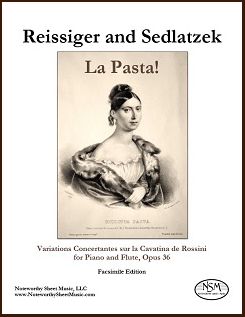 La Pasta! Op.36, by Reissiger & Sedlatzek
La Pasta! Op.36, by Reissiger & Sedlatzek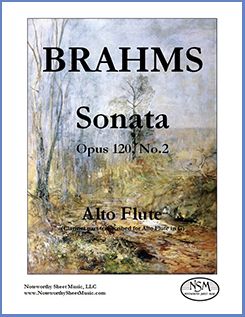 Sonata, Op.120 No.2, by Johannes Brahms
Sonata, Op.120 No.2, by Johannes Brahms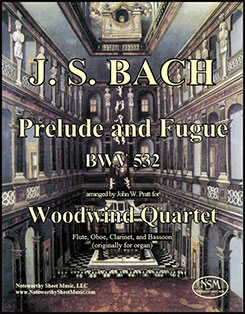 Prelude and Fugue, BWV 532, by J. S. Bach
Prelude and Fugue, BWV 532, by J. S. Bach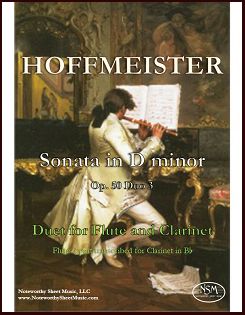 Sonata in D minor, Op.50, Duo 3, by Franz Anton Hoffmeister
Sonata in D minor, Op.50, Duo 3, by Franz Anton Hoffmeister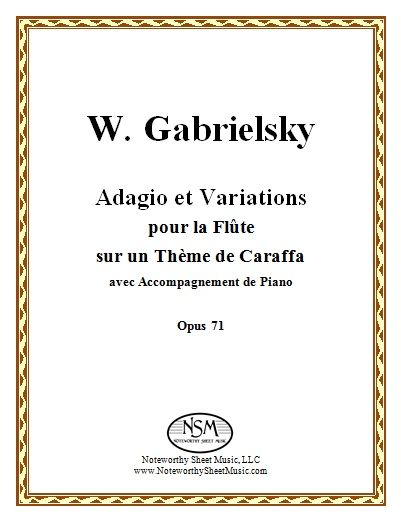 Adagio et Variations pour la Flûte sur un Thême de Caraffa, Op. 71, by W. Gabrielsky
Adagio et Variations pour la Flûte sur un Thême de Caraffa, Op. 71, by W. Gabrielsky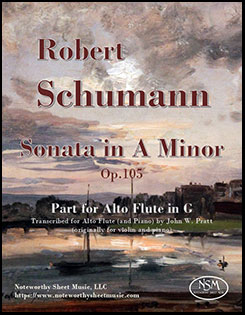 Sonata in A minor, Op.105, by Robert Schumann
Sonata in A minor, Op.105, by Robert Schumann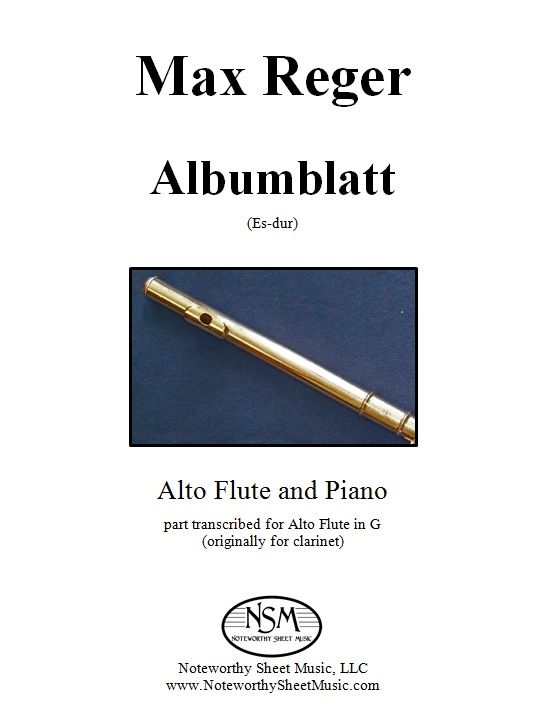 Albumblatt, by Max Reger
Albumblatt, by Max Reger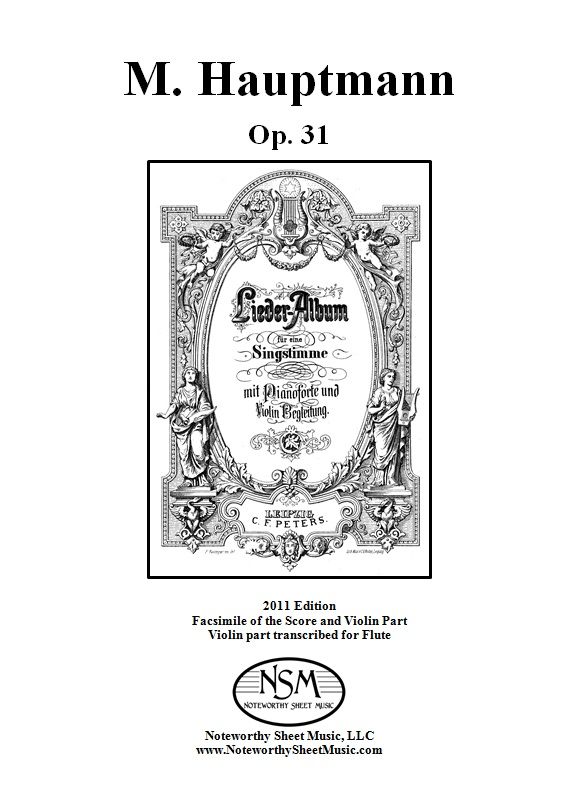 Meerfahrt, Nachtgesang, and Der Fischer, Op.31, by M. Hauptmann
Meerfahrt, Nachtgesang, and Der Fischer, Op.31, by M. Hauptmann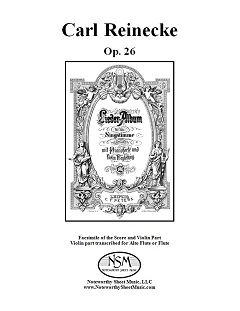 Waldesgruss and Frühlingsblumen, Op.26, by C. Reinecke
Waldesgruss and Frühlingsblumen, Op.26, by C. Reinecke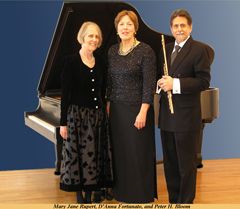 Der Hirt auf dem Felsen, Op.129, by F. Schubert
Der Hirt auf dem Felsen, Op.129, by F. Schubert 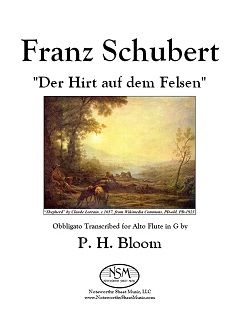
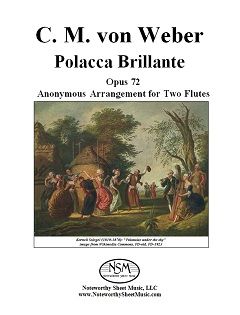 Polacca Brillante, Op.72, by Carl Maria von Weber
Polacca Brillante, Op.72, by Carl Maria von Weber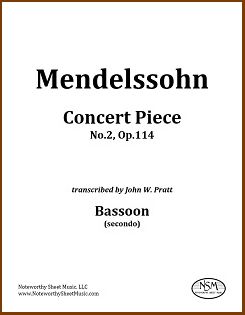 Concert Piece No.2, Op.114, by Felix Mendelssohn
Concert Piece No.2, Op.114, by Felix Mendelssohn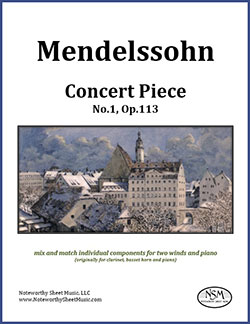 Concert Piece No.1, Op.113, by Felix Mendelssohn
Concert Piece No.1, Op.113, by Felix Mendelssohn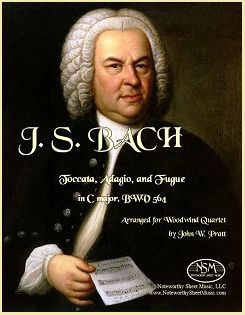 Toccata, Adagio, and Fugue in C major, BWV 564, by J. S. Bach
Toccata, Adagio, and Fugue in C major, BWV 564, by J. S. Bach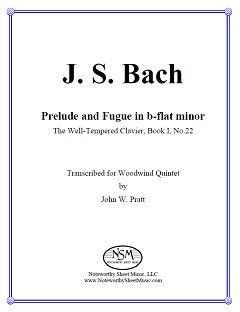 Prelude and Fugue, WTC Book I, No.22, by J.S.Bach
Prelude and Fugue, WTC Book I, No.22, by J.S.Bach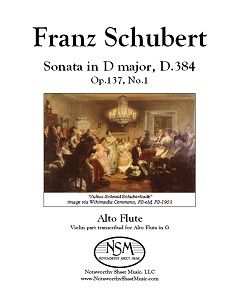 Sonatas, Op.137, by F. Schubert
Sonatas, Op.137, by F. Schubert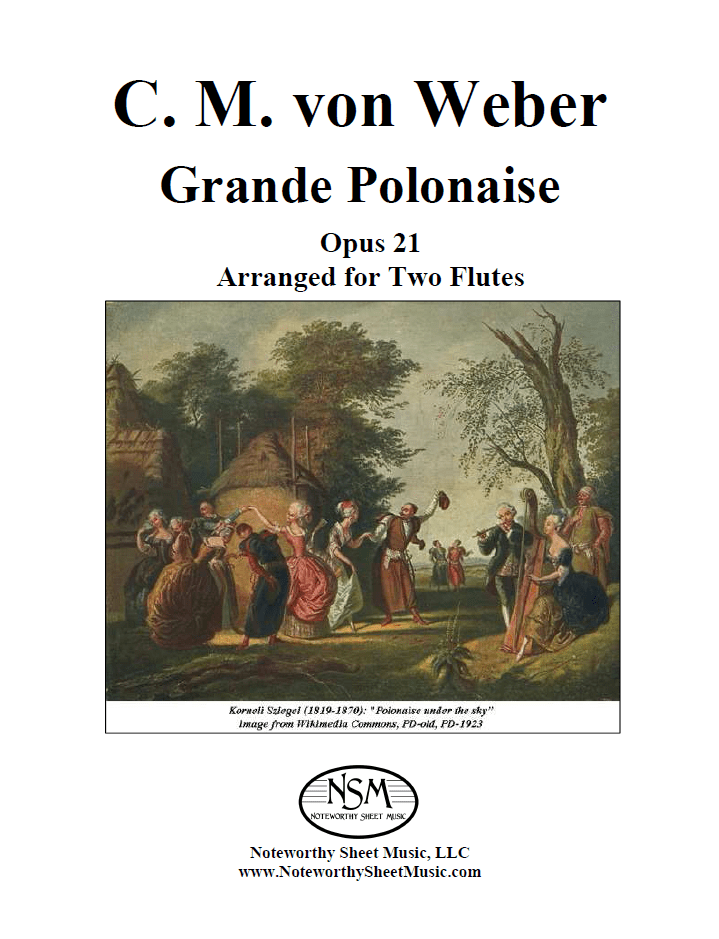 Grande Polonaise, Op.21, by Carl Maria von Weber
Grande Polonaise, Op.21, by Carl Maria von Weber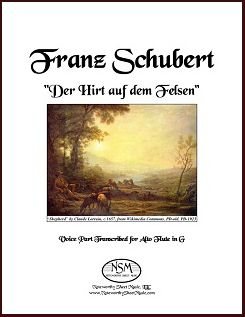 Der Hirt auf dem Felsen, Op.129, by F. Schubert
Der Hirt auf dem Felsen, Op.129, by F. Schubert 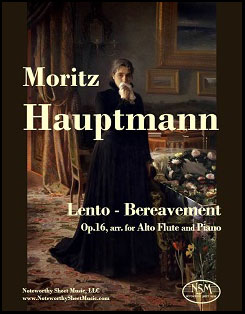 Lento - Bereavement, by Moritz Hauptmann
Lento - Bereavement, by Moritz Hauptmann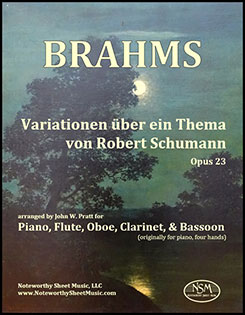 Variationen über ein Thema von Robert Schumann, Op.23, by Johannes Brahms
Variationen über ein Thema von Robert Schumann, Op.23, by Johannes Brahms